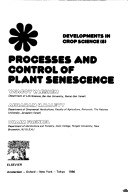Developments in Crop Science
3 total works
Yield Formation in the Main Field Crops
by J. Petr, etc., V. Cerny, and L. Hruska
Published January 1988
This book gives a detailed overview of production processes and yield formation in field crops and permanent grasslands. Yield formation is discussed by the authors as a dynamic process, involving many factors at each stage. Knowledge of the optimum levels of individual yield components makes it possible to control this dynamic process. It is intended that this approach will help to point out gaps in the understanding of the production processes and indicate the direction for further research on this subject. The authors report on various aspects which are involved in yield formation, such as uptake of nutrients, root growth, water use, photosynthesis, transport, distribution and accumulation of photosynthates, etc. A separate chapter discusses the production process as seen from a genetic standpoint. It includes an analysis of phenotype and genotype with respect to production potential, also the heredity, variability of yield potential and new cultivation methods are mentioned. The main part of the book deals with the theory and practice of yield formation in cereals, maize, legumes, sugarbeet, potatoes, clovers and perennial grass stands.
v. 18
Experimental Morphogenesis and Integration of Plants
by J. Sebanek, etc., Z. Sladky, S. Prochazka, M. Kutacek, M. Luxova, and O. Erdelska
Published 20 November 1991
In 1983, the book ``Experimental Plant Morphology'' was written in Czech by the above named authors. Widespread interest in the publication outside Czechoslovakia encouraged the authors to prepare this new English edition, ``Experimental Morphogenesis and Integration of Plants''. It is more than a mere translation of the original: the contents have been extended and further aspects of structural integrity and regulation in plants have been included, especially on the molecular, cellular and tissue level. The overall concept of the book is new and has been supplemented with the latest information on the subject.It aims to inform the scientific public, of current studies on morphogenesis and structural integration in plants. In addition, this book will show the possible way of regulating morphogenesis and structural integrity in plants with regard to the practical needs of agriculture, horticulture and silviculture.
This monograph provides basic and empiric information underlying processes believed to be involved in the doubtless multifunctional plant senescence syndrome. While essentially assuming a `basic science' approach the authors, drawing on data obtained from many of the main laboratories and research centres involved in senescence research the world over, and also on findings of the research groups they are associated with, have described how principles of basic science have been applied to practical problems, and have outlined the partial means presently available to man for achieving plant senescence control. Moreover, information is provided on current problems in the forefront of senescence research. This approach will hopefully engender further enquiry and lead at least to partial solutions to some of the as yet unsolved problems. The book will be an asset to the book shelves of students on advanced courses in agriculture, biology and biochemistry as well as scientists and research workers, university and agricultural research station libraries and horticulturalists.

